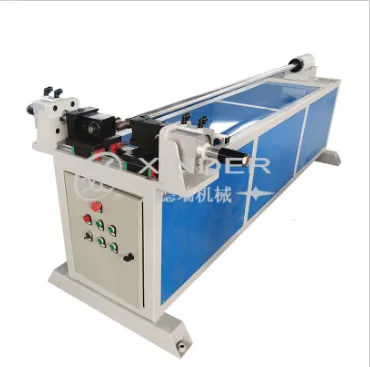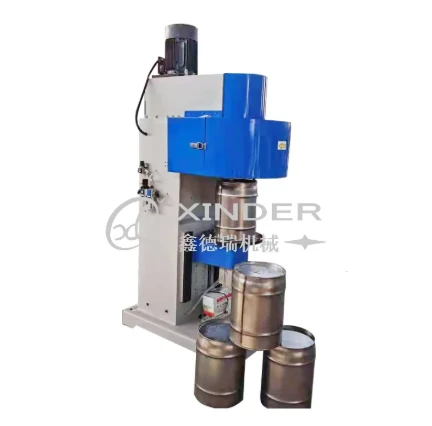-
 8613931787312
8613931787312 -
 Botou Industrial Zone on the east side of National Highway 104, Botou City, Hebei Province
Botou Industrial Zone on the east side of National Highway 104, Botou City, Hebei Province
- Afrikaans
- Albanian
- Amharic
- Arabic
- Armenian
- Azerbaijani
- Basque
- Belarusian
- Bengali
- Bosnian
- Bulgarian
- Catalan
- Cebuano
- Corsican
- Croatian
- Czech
- Danish
- Dutch
- English
- Esperanto
- Estonian
- Finnish
- French
- Frisian
- Galician
- Georgian
- German
- Greek
- Gujarati
- haitian_creole
- hausa
- hawaiian
- Hebrew
- Hindi
- Miao
- Hungarian
- Icelandic
- igbo
- Indonesian
- irish
- Italian
- Japanese
- Javanese
- Kannada
- kazakh
- Khmer
- Rwandese
- Korean
- Kurdish
- Kyrgyz
- Lao
- Latin
- Latvian
- Lithuanian
- Luxembourgish
- Macedonian
- Malgashi
- Malay
- Malayalam
- Maltese
- Maori
- Marathi
- Mongolian
- Myanmar
- Nepali
- Norwegian
- Norwegian
- Occitan
- Pashto
- Persian
- Polish
- Portuguese
- Punjabi
- Romanian
- Russian
- Samoan
- scottish-gaelic
- Serbian
- Sesotho
- Shona
- Sindhi
- Sinhala
- Slovak
- Slovenian
- Somali
- Spanish
- Sundanese
- Swahili
- Swedish
- Tagalog
- Tajik
- Tamil
- Tatar
- Telugu
- Thai
- Turkish
- Turkmen
- Ukrainian
- Urdu
- Uighur
- Uzbek
- Vietnamese
- Welsh
- Bantu
- Yiddish
- Yoruba
- Zulu
High-Precision Round Pipe Bending Machine Affordable Hydraulic Solutions
- Introduction to round pipe bending machine
s: purpose and versatility - Data-driven insights: market trends and capacity analysis
- Technological advantages and system overview
- Comparative analysis of leading manufacturers and price breakdown
- Customized solutions: addressing diverse industry requirements
- Application cases: real-world implementations and ROI
- Conclusion: Future outlook for round pipe bending machine technology

(round pipe bending machine)
Introduction: The Round Pipe Bending Machine in Modern Fabrication
The round pipe bending machine has become a fundamental tool in modern metal fabrication, meeting the ever-increasing demands for precise, consistent, and complex pipe shaping across numerous industries. From automotive manufacturing to infrastructure development and energy production, the ability to deliver expertly curved piping plays a pivotal role in optimized design and efficiency. Designed to manipulate round pipes of various diameters and materials, these machines are engineered for both high-volume production lines and specialized, custom fabrication tasks. The emergence of hydraulic-driven systems and digital controls has further enhanced their accuracy, repeatability, and versatility, making them indispensable to forward-thinking manufacturers seeking uncompromised quality.
Data-Driven Insights: Market Trends and Capacity Analysis
The global demand for pipe fabrication solutions has surged in the past decade. According to industry reports from 2023, the global metal forming machinery market was valued at $24.7 billion, with pipe bending equipment accounting for approximately 18.5% of total revenue. Notably, the adoption of hydraulic round pipe bending machines rose by over 9% CAGR between 2020 and 2023, outpacing their mechanical and manual counterparts. Average round pipe bending machine capacity varies by model, ranging from light-duty units capable of bending up to 50mm OD pipes to heavy-duty industrial machines exceeding 350mm OD. The shift towards precision-controlled machinery addresses the rising complexity of design specifications in aerospace, shipbuilding, and renewable energy sectors. This data underscores not only growing market potential but also a critical need for machines that balance throughput, flexibility, and precision.
Technological Advantages and System Overview
Technological evolution defines the current generation of round pipe bending equipment. Today's hydraulic round pipe bending machine models incorporate servo-driven hydraulics, programmable logic controllers, and touch screen HMIs to facilitate seamless operation and error correction. Key advantages include:
- Precision & Consistency: Servo-hydraulic systems maintain bending radii within ±0.1° accuracy, minimizing rework and material wastage.
- Versatility: Interchangeable tooling enables fast adaptation to a range of pipe diameters and materials, such as stainless steel, copper, or aluminum.
- Productivity: Automated feeding, clamping, and bending cycles can achieve production rates upwards of 350 bends per hour for standard sizes.
- Safety & Ergonomics: Integrated safety light curtains, overload sensors, and user-focused controls reduce workplace accidents and operator fatigue.
- Data Integration: Digital monitoring and reporting features allow quality assurance and traceability for each bend operation.
Comparative Analysis of Leading Manufacturers and Price Breakdown
Selecting a suitable round pipe bending machine involves evaluating technical specifications and understanding market pricing dynamics. Below is a comparative table of leading brands, highlighting core features and indicative prices (2024 industry data):
| Brand/Model | Bending Capacity (OD) | Bending Accuracy | Cycle Rate (per hr) | Control System | Price Range (USD) |
|---|---|---|---|---|---|
| TechBend Pro 80 | 12 – 80 mm | ±0.1° | 320 | Touchscreen PLC | 30,000 – 40,000 |
| PowerBend H1000 | 20 – 100 mm | ±0.2° | 285 | Standard PLC | 27,000 – 38,000 |
| HydroPipe FlexiMax | 10 – 60 mm | ±0.05° | 350 | Advanced HMI | 35,000 – 48,000 |
| PrecisionBend Series R3 | 25 – 120 mm | ±0.15° | 300 | Touch Control | 32,500 – 46,000 |
| SteelCurve 210 | 15 – 110 mm | ±0.1° | 310 | Smart PLC | 28,000 – 41,000 |
Notably, the round pipe bending machine price varies depending on factors such as production speed, automation level, hydraulic vs. mechanical drives, and after-sales service options. Higher-end models deliver tighter bending tolerances, advanced user interfaces, and robust data tracking capabilities, justifying their premium cost. Prospective buyers are encouraged to evaluate longevity, total cost of ownership, and manufacturer support alongside initial pricing in order to maximize their investment.
Customized Solutions: Addressing Diverse Industry Requirements
Modern fabrication projects often require machine adaptability beyond standard catalog offerings. Manufacturers now provide extensive customization pathways to address unique operational needs. Custom solutions may include:
- Variable Radius Tooling: Tailored dies and mandrels allow for complex, multi-radius bends in a single cycle.
- Material-Specific Optimizations: Adjusted hydraulic pressures and special coatings accommodate challenging materials like titanium or duplex stainless steel.
- Integration with Downstream Automation: Connectivity with robotic loaders, conveyor systems, or part marking units for seamless production workflows.
- Customized Software: User-defined program libraries and remote diagnostics for specialized job requirements or rapid part changeovers.
- Footprint Adjustments: Modification of frame size or orientation to suit restricted manufacturing floor conditions.
Application Cases: Real-World Implementations and ROI
The tangible impact of a high-grade pipe bending solution is best illustrated through real-world application cases. Consider the following industry deployments:
- Automotive Exhaust Manufacturing: An OEM utilizing a hydraulic round pipe bending machine reported a 25% reduction in cycle times and 40% decrease in material scrap, resulting in annual savings of over $170,000.
- Renewable Energy: Wind tower fabricators integrated automated bending systems, achieving consistent large-diameter bends with ±0.08° precision, supporting turbine assembly efficiency and reducing on-site adjustments.
- Shipbuilding: A global shipyard deployed custom-adapted machines operated via centralized control, enabling synchronized multi-axis bending for fuel lines and HVAC ducting, cutting production lead times by 30%.
- Construction & Infrastructure: Prefabricators enhanced building pipeline installation integrity with close-tolerance bends, minimizing leak risk and rework costs in sensitive environments like hospitals and laboratories.
Conclusion: Future Outlook for Round Pipe Bending Machine Technology
As manufacturing continues to evolve, the role of the round pipe bending machine will only expand, propelled by increasing demand for customization, zero-defect production, and digital integration. Future trends point toward greater use of artificial intelligence for predictive maintenance, cloud-based machine monitoring, and eco-friendly hydraulic systems that reduce energy consumption by up to 22%. The intersection of precision engineering, smart control, and sustainable operation ensures that both industrial and small-scale fabricators can remain competitive in a dynamic global landscape. In evaluating both entry-level and high-capacity units, understanding core distinctions in quality, automation, and service will remain crucial. As technology matures, the front-runners will be machines—and the companies behind them—that continually refine user experience, maximize uptime, and deliver reliable, cost-effective pipe bending for the next generation of innovators.

(round pipe bending machine)
FAQS on round pipe bending machine
Q: What is a round pipe bending machine?
A: A round pipe bending machine is a device designed to bend round pipes and tubes into various angles and shapes. It is widely used in construction, automotive, and manufacturing industries. It ensures precision and efficiency in pipe bending.Q: How much does a round pipe bending machine cost?
A: The price of a round pipe bending machine varies depending on its size, features, and automation level. Basic models start from a few hundred dollars, while advanced hydraulic types can cost several thousand dollars. Contact suppliers for an exact round pipe bending machine price.Q: What is the advantage of a hydraulic round pipe bending machine?
A: A hydraulic round pipe bending machine offers superior bending power and accuracy compared to manual models. It is suitable for heavy-duty applications and can handle larger diameter pipes. Its operation is also more efficient and less labor-intensive.Q: What factors should I consider before buying a round pipe bending machine?
A: Consider the pipe diameters and thicknesses you need to bend, required bending angles, and the machine’s level of automation. Check for support, warranty, and round pipe bending machine price. Also, ensure compatibility with your production needs.Q: Can a round pipe bending machine work with different materials?
A: Yes, round pipe bending machines can usually handle various materials such as steel, stainless steel, copper, and aluminum. The material type may influence the machine selection and settings. Always confirm material compatibility before purchasing.-
Unlocking the Power of Light: Exploring Modern Laser Welding SolutionsNewsJul.15,2025
-
Streamlining Steel Drum Manufacturing: A Guide to Barrel Production EquipmentNewsJul.15,2025
-
Precision Welding for Pipes and Sheet Metal: Elbow and Seam Welding TechnologiesNewsJul.15,2025
-
Mastering the Art of Metal Packaging: A Guide to Can Welding MachinesNewsJul.15,2025
-
Mastering Metal Bending: A Deep Dive into Elbow Fabrication MachinesNewsJul.15,2025
-
Automated Welding Machines: Revolutionizing Precision and Productivity in MetalworkNewsJul.15,2025
-
The Rise of Laser Welding in Global Manufacturing: Spotlight on China’s Competitive EdgeNewsJun.05,2025
-
 Pneumatic Handle Welding MachineSep . 13, 2024
Pneumatic Handle Welding MachineSep . 13, 2024 -
 Fully Automatic Kaiping Production LineOct . 17, 2024
Fully Automatic Kaiping Production LineOct . 17, 2024 -
 Fully Automatic Metal Bucket Lifting HeadphonesSep . 14, 2024
Fully Automatic Metal Bucket Lifting HeadphonesSep . 14, 2024

